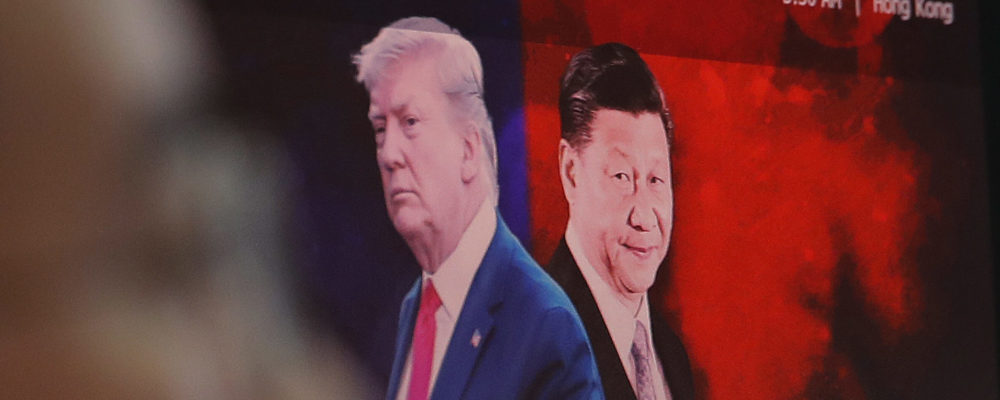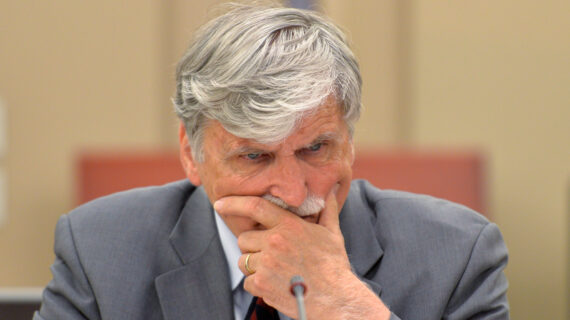The 19th century belonged to Britain and the Empire, which fostered an international economic order using the British pound as the global currency.
This world economic order combined with the British fleet established the Pax Britannica and set the stage for the First Great Globalization from 1870 to 1913 and a period of rapid international trade growth and industrialization. For Canada, its role as a dominion within the empire meant its foreign policy and its trade policy reflected its connections with Britain.
By the late 19th century nearly two-thirds of Canada’s exports were going to Great Britain with the remainder to the rapidly growing United States which by the end of the 19th century had surpassed Britain’s GDP.
Within this 19th century global framework, Canada came to be and established a national economic strategy that guided economic development up to the Second World War. It was an export oriented strategy combining agricultural development in the prairies with the central Canadian manufacturing heartland. The prairies grew and exported wheat serving as an investment frontier and market for central Canadian manufacturing which was sheltered behind the tariff wall of the National Policy.
The strategy’s linchpin pin was the creation of the east-west railway transportation corridor linking the resources of the west with the rest of Canada. It was a combination of selective government involvement via transportation and tariff policy combined with the private sector demands of growing international resource markets and their investment capital.
In the post-WWII world, Canada moved out of the shadow of a declining British empire and towards a closer economic relationship with the United States that was counterbalanced with reliance on multilateral international institutions and increasingly liberalized world trade. At the same time, being adjacent to the global economic superpower next door made for a convenient market for Canadian exports to the point where over three-quarters of Canadian exports eventually went there.
Like China, the United States does have its own interests and as the Trump presidency illustrated, our relationship with them is actually more fragile than we thought and not so special after all.
In terms of foreign policy and trade, the reliance on the United States for over one-quarter of Canada’s GDP meant that despite our promotion of international institutions, over time our foreign policy became increasingly dominated by the relationship with the United States. Indeed, Canada was quite privileged to share a border with a relatively benign neighbour that provided both a military umbrella and served as a lucrative market.
In the end, this relationship may have been too convenient when it came to forging a more diverse foreign policy and trading relationships.
The 20th century according to Sir Wilfrid Laurier was going to belong to Canada but as we all know it was instead the American Century with the institutions and framework facilitated and supported by the United States in the post-World War II era the defining feature. The Americans entered the 20th century preferring to minimize foreign entanglements but the rise of Communism and Fascism ultimately forced them to engage with the world but on their own terms.
Along with the U.S. dollar as the international reserve currency, there was the World Bank, the International Monetary Fund and the United Nations as well as assorted military and political alliances to contain American Cold War adversaries. This liberal economic order and network of security alliances provided the umbrella for post-World War II reconstruction and investment spearheaded by the Marshall Plan and the great economic boom spanning 1946 to 1973. The result was the rebuilding of Europe and the rise of the Asia-Pacific economies all under the Pax Americana.
From the Pax Britannica and Great Powers of the 19th and early 20th century, the world went to the Cold War standoff between the two superpower alliances led by the United States and the Soviet Union. For several decades, the world was a tentative co-dominium of the two superpowers.
However, the economic productivity of the Soviet Bloc with its non-market policies undermined its strength and the result was the collapse of the Soviet Union. In its aftermath, the United States briefly reigned supreme buts its liberal economic framework had spawned broad based economic development across the world and facilitated the growth of rivals. Rapid economic growth created wealth and raised development in many parts of the world and it has also eventually made the world much more multi-polar.
Since the fall of the Berlin Wall in 1990, the world has changed yet again. There has been a Second Great Globalization fueled by enhanced international trade and the increased economic development of China and the Asia-Pacific. China’s growth began decades earlier as the Communist government embraced an almost Mackenzie King style philosophy of “markets if necessary, but not necessarily markets” that implemented market-oriented policies that harnessed incentives and created growth.
The fall of the Berlin Wall was believed to herald the ultimate triumph of the liberal economic order and American policy and generated Fukuyama’s now seemingly optimistic “end of history.” However, the world has become more prosperous, more integrated economically, and more unstable at the same time as it settled into something more akin to the Great Powers world of the early 20th century. History is not over.
China did not embrace democracy and liberalism but what can best be termed authoritarian capitalism with the leading edge propelled by state owned companies. China’s goal is a return to its dominant global position of nearly a millennium ago before the rise of the west by making the entire world part of an economic entity dependent and intertwined with China.
As the heirs to a five thousand year old civilization, China has a sense of superiority with respect to the outside world and does not wish to be lectured to, nor does it wish to lecture others provided mutually beneficial economic relationships are maintained and appropriate respect to China shown.
China does not seek to conquer the world but to use it to its own ends. It used the world liberal economic order most effectively to this end by using open economies as markets for its goods and sources of implicit and explicit technology transfer. Key to this strategy in the future will be the economic relationships and investments of the Belt and Road initiative which is creating an economic highway from China westward to Europe, Africa and the mid-East and is practically a replication of the medieval Silk Road. Its ultimate goal may possibly be for a Belt and Road initiative that circumnavigates the world with China at its center and resources and commerce flowing to it from around the world through links going through the warming Arctic Ocean or a new Chinese financed canal through Central America.
Needless to say, in these latter projects, China runs up more directly against the United States which has treated the Americas as its unique direct sphere of influence while maintaining dominance in the rest of the world. The Chinese response will be that what is good for the goose will be good for the gander given American naval presence in the Pacific, Indian Ocean and South China Sea. It is not coincidence that China has been investing in aircraft carriers which serve mainly to project military capability beyond a country’s own shore.
One-fifth of the way into the 21st century, this is the world that Canada finds itself in. The United States is still the major power but it will have to contend with China and Russia and perhaps India or Brazil with traditional major states such as the U.K., France, Japan and Germany also part of the mix. There will be no unilateral superpower or co-dominium.
With China’s increasing confidence, its cover as the shy duck that peddles furiously beneath the surface has been blown and the international pushback currently underway means that unlike the 19th or 20th centuries, the 21th century will belong to no one in particular.
It will be an oddly self-regulating disordered world with constantly shifting alliances and interests that afford opportunities and imperatives for trade and global cooperation given issues such as climate change. In some respects, for many countries — Canada included — it could well be a political metaphor for the perfectly competitive world of economic models where we must take the world as a given and adapt.
A more multi-layered competitive world with three or four superpowers and a half a dozen secondary powers and then everyone else falling in line could also be seen a sort of oligopoly type leadership model. Either way, we will be doing a lot of following.
Canada has yet to find its way in what has become a more multipolar world. On the one hand, we are more closely integrated than ever before with the United States but the rise of China and its economic power until recently also offered a potent allure. In the wake of the “two Michaels,” Canada is caught between the devil it knows and the devil it is rapidly becoming better acquainted with. Any hopes that China would become as lucrative a market as the United States with its own special relationship have been dashed by the hard lesson that China has no special relationships beyond those that serve China.
So, what is to be done? One option is to simply retreat into our traditional relationship with the United States and hope for the best. However, like China, the United States does have its own interests and as the Trump presidency illustrated, our relationship with them is actually more fragile than we thought and not so special after all. China, like much of the world, sees us as a satellite of the United States and thinks even less of us given the way the United States has used us as the frontman for its interests in the case of Meng Wanzhou. We may lecture China on values and human rights, but China would take us more seriously if we had a couple of aircraft carriers in the Pacific to back that up.
In the end, Canada’s fallback position will be multilateralism and enlisting allies with similar interests in fostering freer trade, democracy and a liberal economic order. This is not a misplaced strategy for a small open economy that is essentially a price-taker on international markets but it needs to be backed up with deeds rather than words. If it wants to be taken more seriously, Canada needs to invest more in its own defense capability as well as make the necessary investments in foreign aid and foreign affairs to convey that its money is where its mouth is. A more competitive world with many partners will require more resources invested in external affairs. The age of free riding on an alliance as a junior partner is over. Too expensive you might say? Given the rate at which government has been spending money lately, just a fraction of that going to defense and foreign affairs would represent a substantial investment in our security.
Moral suasion from under the safety of the American defense umbrella is not going to cut it in the 21st century when dealing with China, Russia, India, the EU or even the Americans. With climate change, our Arctic will increasingly be seen as a short cut for world transportation by other countries — not to mention a source of resources — and if we want to continue claiming it as Canadian territory, we will need to have more of a presence. After 150 years as first an infant under the British Empire and then a teenager under the Americans, it is time to grow up.
We are approaching 40 million people with a GDP that is the tenth largest in the world. Perhaps, it is time we behaved like it.




